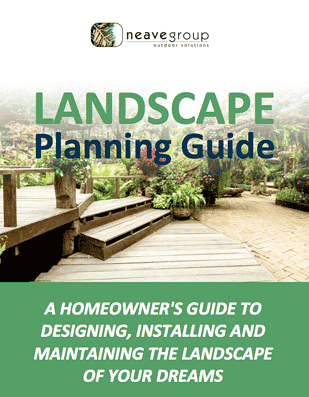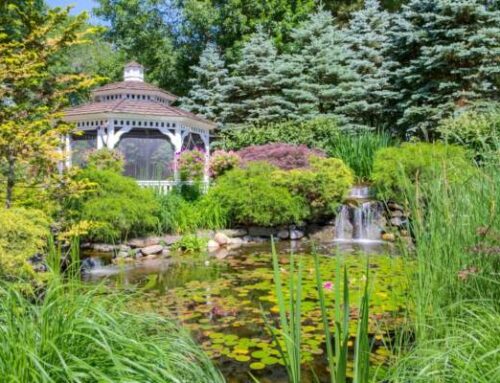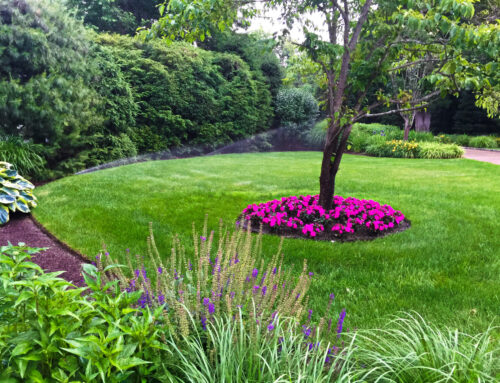Curb appeal isn’t just some urban myth that real estate agents peddle. It’s a real thing. Adding landscaping to your property boosts your curb appeal AND your property value.
Decorating trends come and go, but landscaping endures. It adds value to your property right away, and its value increases as your trees and plants get bigger and more beautiful.
But don’t just take our word for it. Researchers have the proof.
Proof: Statistics On Curb Appeal
A study by the University of Michigan found that consumers value a landscaped home 11.3 percent higher than the same home without good landscaping.
According to SmartMoney.com, hedges alone raise property values by 3.6 percent.
A horticulturist at Virginia Tech found that a well-landscaped home had a significant price advantage over a home with no landscaping. That advantage ranged from 5.5 percent to 12.7 percent. That translates into an extra $16,500 to $38,100 in value on a $300,000 home.
Small Landscaping Investments Pay Off
Landscape boosts don’t have to cost a fortune.
An investment of $400 to $500 dollars in landscaping can bring a return of four times that, according to a survey of 2,000 real estate brokers conducted by HomeGain, an online real estate marketing site.
Here’s a look at five affordable landscaping ideas to increase your property value.
Trees
Everybody loves trees.
Trees screen unsightly views. Many varieties turn gasp-inducing colors in the fall. They muffle sound from nearby streets and freeways and create an eye-soothing canopy of green.
Trees save energy. Planting shade trees on the south and west faces of your house can reduce winter heating bills by up to 15 percent and summer cooling bills by up to 50 percent. As few as three trees can make a difference.
Trees help us breathe. Through photosynthesis, the average tree can clean up to 330 pounds of carbon dioxide annually while emitting enough oxygen for a whole family. And they don’t even brag about it.
During a storm, the canopy and root systems of trees act as both a sponge and a filter, cleaning the water as it seeps into the water table and reducing stormwater runoff.
Naturally, everybody wants a home with trees. Don’t believe us? Check out this Tree Benefit Calculator to discover the benefits trees provide in your exact zip code.
The calculator examines how a tree species in a particular zip code affects property value, stormwater runoff, carbon dioxide reduction and energy savings.
Water Features
The key here is creating a backyard sanctuary featuring the relaxing sound of water.
The sound of water is soothing after a hectic day at work. It masks distracting sounds, like traffic in front of your house or the neighbor kids’ water balloon battles. It attracts birds and butterflies who love to sip and splash in the water.
Bet you’re more relaxed just thinking about it.
Consider a fountain or a small pond, from just a couple hundred dollars to around $2,000.
Include a comfortable place to sit and relax.
If you opt for a pond, include aquatic plants and a few pretty fish.
There’s a water feature for every landscape and every budget.
Native Plants
There’s a big movement these days toward native plants — plants original to your area of the country. The many benefits of these make-yourself-at-home beauties automatically boost your property value.
You’ll notice the difference right away.
You won’t need to water as much. Unlike many non-native plants, native plants are hardy and less susceptible to pests and diseases. They grow well and require little care. By choosing the right native plants, you’ll likely need fewer pesticides and less water.
And you’ll notice a difference over time. Maintaining an acre of native plants over 20 years costs $3,000, compared with $20,000 for maintaining a lawn of non-native turf grass, according to a study by Applied Ecological Services, one of the world’s leading ecological consulting firms.
Choose the right native plants, and you create a wildlife garden that offers seeds, nuts and fruits for birds and small mammals, nectar for hummingbirds and butterflies, host plants for butterfly caterpillars.
Here in New York and Connecticut, we’re lucky — we’re blessed with loads of lovely native plantings that can beautify your landscape.
Try wild columbine. Its unique red and yellow flowers attract hummingbirds. New England aster perks up any bed with bright lavender flowers with cheery yellow centers in late summer and early fall. Pink turtlehead offers showy pink flowers from July through September.
Plant a red chokeberry bush for bright red fruit and pinkish-orange fall color.
Visit plantnative.org for a great list of choices.
Professional Landscape Design Plan
One of the biggest landscaping mistakes homeowners make is diving in without a landscape design plan.
It’s easy to get excited at the nursery or garden center and buy a couple trees here, some shrubs there and oh, honey, look at these beautiful coreopses! And these Asiatic lilies! And so on and so on.
Then your yard soon becomes a disorganized mishmash of plants. That actually detracts from your property value.
Invest in an experienced landscape designer who can draw up a cohesive landscaping plan, even if you tackle the planting a bit at a time.
Manicured And Maintained Landscaping
Overgrown landscaping or a patchy, diseased lawn says a lot about you as a homeowner. And not in a good way.
Overgrown trees and messy bushes can block sunlight from your house, obscuring views, and it just looks like you don’t care about your home — inside or out.
Consider hiring a good lawn service company to get your turf in good shape and trim up your scraggly shrubs.
A nice layer of mulch is a wonderful thing, too. Used right, it can help to conserve water, shield your plants’ roots from temperature extremes and discourage the growth of weeds.
Plus, it looks good. Decorative mulch can add color and texture to the space between plants. A nice layer of mulch can tie your garden together, giving your beds a clean, uniform appearance, causing rampant mulch envy in your neighborhood.
Let Neave Help You Boost Your Property Value Through Landscaping
The pros at Neave Landscaping can help with all of these property value-boosting, affordable landscaping ideas, and more.
If you’re in the Hudson Valley, call us at (845) 463-0592. If you’re in Westchester County, call (914) 271-7996; from Connecticut, dial (203) 212-4800. Or, fill out our simple web form, and we’ll contact you about setting up your free consultation.
We’ve been creating beautiful landscapes for more than 40 years with a skilled team of expert arborists, landscape designer, and landscaping professionals.
Neave Landscaping is just the tip of the iceberg. The Neave Group includes teams at Neave Carpentry, Neave Masonry, Neave Pools, Neave Irrigation and more. We’ll happily handle all your property’s needs.







